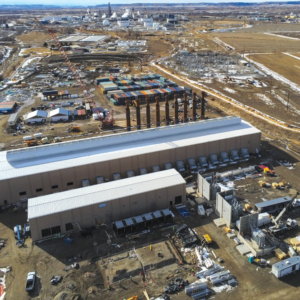Immortal Construction, 1822 Island View Dr, 59101, 861-3892, Thomas Highsmith, general contractors
Tea City & Cupcakes, 1001 Shiloh Crossing Blvd #7, 59102, 652-1882, Amy Jensen, restaurants
JDS Woodworks, 21 Hemlock Dr #3, 59101, 717-5304, Joel D Sease, service
Brightside Therapy LLC, 1430 Country Manor Blvd, 59102, 534-9029, Desire Meismer, service
Doghouse Woodworks, 2914 4th Ave S, 59101, 530-5288, Thomas Giovanini, retail sales
All Stars Drywall LLC, 2030 Overland Ave Rm119, 59102, 272-6334, Van Thomas, service
J&H Contractors, 4234 Jansma Ave, 59101, 461-1672, Justin Peabody, general contractors
4 Seasons Tree Service, 207 Lewis Ave, 59101, 696-2924, Jonathan Martinez, service
Trejo Construction LLC, 1501 Butler Creek Unit A, Belgrade 59714, 539-74080, Ivan Trejo/Immer Menjivar, general contractors
Casey Tully – Fine Art, LLC, 711 Black Hawk St B1, 59106, 262-391-9593, Cassy Tully, retail sales
M-Proven LLC, 1674 Lakehills Dr, 59105, 218-391-9593, Melinda Provencher, retail sales
Yellowstone Modern, 4228 Vaughn Ln, 59101, 208-7767, Jesse Arstein, general contractors
Q7 Systems Inc, 2901 Monad Rd #187, 59102, 861-9191, Robert Espinoza, service
Elegant Spatula Bakery, 1139 N 27th St – Ste B, 59101, 894-2626, Jamie Conrad, restaurants
Pryor Creek Cuisine, 7420 US hwy 87 E, 59101, 698-3327, Stephanie roods, restaurant
Tanah Miah LLC dba Dickeys Barbeque Pit, 3911 Central Ave – Ste 1, 59102, 702-1114, Austin Schnizler, restaurants
Hair by Koree LLC, 3509 San Marino Dr, 59101, 855-7122, Koree Fox, cosmetology,
HMW Hauling LLC, 1755 Morocco Dr, 59105, 390-4637, Ryan Schnitzmeier, service
Double Header Design LLC, 2937 W Copper Ridge LP, 59106, 208-5324, Kevin Meyer, service
McKinley Flooring, 2525 Burlington Ave, 59102, 661-5864, Jeff McKinley, service
Denise Childs HR Consulting, 6302 Ridge Stone Dr N, 59106, 360-941-6245, Denise Childs, service
Favorite Finds, 1023 Quinella Dr, 59101, 861-5407, Lacey Wattles, retail sales
Communication Resources LLC, 5340 Momont Rd, Missoula 59808, 327-5013, Chris Richards, service
K2 Construction and Framing LLC, 5676 Broadwater Ave, 59106, 860-0373, Gabriel Konecny, general contractors
Therapeutic Massage Service, 1509 13th St W, 59102, 652-2633, Susan Carlson, solo practitioner
All Eyes on Me Esthetics, 4657 Pine Hills Rd, 59101, 845-3319, Roylynn Grant, retail sales
Corky Donnelly Construction, 248 Avenue F, 59101, 698-7675, Corky Donnelly, general contractors
TLC Lawn Care, 618 Tanglewood Dr, 59101, 559-737-3916, Travis Carpenter, service
JR Cuellar Roofing LLC, 804 14th Ave W, Williston ND 58801, 504-205-2838, Joel Edwin Cuellar, roofing contractor
Carbon Cutters Lawn Service, 1240 Caroline St, 59105, 661-2191, Nathaniel Palmer, service
Sean Hammond GC, 2570 Keel Dr, 59105, 647-7218, Sean Hammond, general contractors
Clean Site Solutions, 639 St John’s Ave, 59101, Heather Birr, service
Enchanted Fantasy Parties LLC, 2035 Meadowood St, 59102, 697-3849, Tina Hirschkorn, service
Flower Chappel Farm & Co, 1940 Avenue C, 59102, 570-204-2302, Elizabeth Chappel, retail sales, 59102
Rocky Mountain Vacation Homes LLC, 6028 Norma Jean Ln, 59101, 600-0449, Jerred Bies, real estate rental
El Rodeo #3, 300 S 24th St W, 59102, 551-3463, Sergio Sanchez, restaurants
The Little Way, 1555 Province LN, 59102, 855-1070, Michaela Martinson/Danielle McMillan, retail sales
Cloud Peak Prep and Ship LLC, 1934 Miles Ave, 59102, 307-461-0862, Jared Bangerter, service
Gratitude in Action (517 5th St W), 517 5th St W, 59101, 694-5401, Richard Todd, service
Gratitude in Action (515 5th St W), 515 5th St W, 59101, 694-5401, Richard Todd, service
Western Carpet Cleaning, 7806, Neibauer Rd, 59106, 876-5704, Samuel Walter, service
Dirt in Dust Mobile Detailing Services, 511 1st St SE, Park City MT 59063, 855-0176, Lance Courtney, service
Howling Ridge Transportation LLC, 1481 Northern Apt E, Worden MT 59088, 402-6577, Jessie and Peggy Fredericks, service
Great Divide Commercial Concrete LLC, 17 Box St, Lavina MT 59046, 561-2525, Camron Maynor, general contractors
GSL Electric Inc, 8540 So. Parkway, Sandy UT 84070, 801-565-0088, Lance Capell, electrical contractors
Yellowstone Jewelers, 820 Shiloh Crossing Blvd Ste A, 59102, 661-1081, Matthew Bonner, retail sales
Madole Rentals LLC, 3440 Granger Ave S Unit 29, 59102, 855-2250, Desmone Madole/Alexis Tripp, service
Montana Roofing and Construction LLC, 864 Garnet Ave, 59105, 694-8496 Jade Goodyear-Anderson, general contractors
Kitchen-Man LLC, 6041 Elysian Rd Unit 101, 59101, 850-5334, Jeremy Evans, restaurants
Berry Clean LLC, 2411 Meadowood St, 59102, 561-9918, Pauletta Young, service
Fun Trade, 300 S 24th St W, 59102, 598-2544, Gibby Carlascio, retail sales
406 Cleaning, 506 Grand Ave, 59101, 598-4468, Keith Harold, service
Abrahamsen Distributing LLC, 720 Wyoming Ave, 59101, 671-7033, Joshua Abrahamsen, distributors
Guzman Homes, 8700 Fox Run, Shepherd MT 59079, 672-4125, Todd and Tami Guzman, general contractors
Annie Moon’s Backyard, 1001 Rimrock Rd, 59102, 861-0244, Gayle Lam, service
Northern Rockies Extreme Customs, 2727 Buffalo Trail Rd, Molt MT 59057, 694-4111, Brian Geffre, general contractors
XV Contracting, 627 N 13th, 59101, 366-2981, Xerxes Vodicka, general contractors
Impeccable Painting, 5318 Denali Dr, 59101, 969-9408, Kade Gies, service
Next Level Landscaping & Excavation, 4708 Farm Vista, Laurel 59044, 861-8744, Tanner Coomber, service
Solid Concrete Inc, 5444 Chicago Rd, 59106, 373-0053, Jennell Donnes, service
PDG Shippers, 836 Governors Blvd, 59105, 699-5016, Darla Edwards-Glibbery, service
The Massage Witch, 43 Wyoming Ave, 59101, 218-8104, Charlie Purcell, solo practitioner
Carmichael and Co, 2950 King Ave, 59102, 545-0440, Cassie Michael, service
Ray Dicken, 1542 Lakers Way #6, 59106, 200-5269, Ray Dicken, retail sales
Premier Air LLC, 318 Pronghorn Trail, Bozeman 59718, Chad Dammen, service
The Sparkle Shack, 12 E Almadin Ln, 59105, 939-3680, Sarah Carroll & Keera Stookey, retail sales
Woodfort Industrial Concrete Group, 1036 Landmark, Belgrade MT 59714, 570-7817, Joanne Marble, general contractors
Northern Rockies Therapy and Behavioral Health PLL, 902 Wyoming Ave, 59101, 696-7079, Kristi Lindell-Elliott, service
B.E. Satisfied Lawncare LLC, 2224 Highway 87 E – Trailer 187, 59101, 696-0745, Brenner Elliott, service
Warhammer, 111 S 24th St W, 59102, n/a, Games Workshop Retail Inc, retail sales
Mowing Montana, 909 Maywood Dr, 59102, 998-3211, Richard Romersa, service
Edward Jones (Grand), 2860 Grand Ave, 59102, 717-0774, Kelsay Pallarito, service
Aspen Meadows Health and Rehabilitation Center, 3155 Avenue C, 59102, 656-8818, Aspen Meadows SNF Operations LLC, service
Aspen Meadows Assisted Living, 3155 Avenue C, 59102, 238-5982, Aspen Meadows SNF Operations LLC, service
Les Schwab Tire Center #916, 1146 Shiloh Crossing Blvd, 59102, 541-416-5586, Stacy Irwin, service
Mollie Rose AirBNB, 6127 Mollie Rose Ln, 59101, 602-561-3625, Tanith Moore, real estate rental,
Painting Yellowstone, 3040 Central Ave #I-206, 59102, 702-2748, Sergio Arroyo, service
Kleinfelder Inc, 14710 NE 87th St – Ste 100, 425-636-7900, Redmond WA 98052, engineer
Big Sky excavation & Dirt LLC, 4316 Huckleberry Ln S, 59106, 623-1315, Jerry Brey, service
Precious Hart, 4303 Stone St, 59101, 623-1315, Brydget Hart, retail sales
Desjarlais Construction LLC, 2017 E Main St, Laurel 59044, 694-2982, Joshua Desjarlais, general contractors
Heavenly Beauty by Katie, 1423 38th St W – Ste 1, 59102, 876-4510, Katie Tutokey, service
Ace in the Home, 11 Lakeview Dr, Roberts 59070, 425-4320, Laura Castro, service
Mom’s Kitchen, 922 S 28th St, 59101, 970-6169, Alfredo & Maria Hernandez, restaurants
Stateline Electric LLC, 3827 Galloway St, Bozeman 59715, 690-0736, Scott Nelson, electrical contractors
Elk Creek Landscaping, 1920 Belvedere Dr, 59102, 698-2776, Joshua Myrstol, service
TEF Renovations, 6240 Twelve Mile Rd, 59105, 697-9098, Ty Ferguson, general contractors
Country Grill, 401 Cottonwood, Laurel 59044, 440-417-6727, Jennifer Lesher & Ashley Winchell, restaurants
API Contracting, 2304 10th Ave N, 59101, 598-8820, Jamie Stradley, general contractors
Uncle Buck’s Gutter Cleaning LLC, 3006 4th Ave S #1, 59101, 720-3098, Dawson Buckalew, service
Marksman STR, 2416 Louise Ln, 59102, 690-1691, Mark Schiffner, real estate rental, 59102
Cross Tier K9 LLC, 3113 St John’s Ave, 59102, 855-4921, Daniel Richard, service
Oak Tree Designs LLC, 1525 Chesapeake Ln, 59101, 661-9151, Kevin Hof, retail sales






